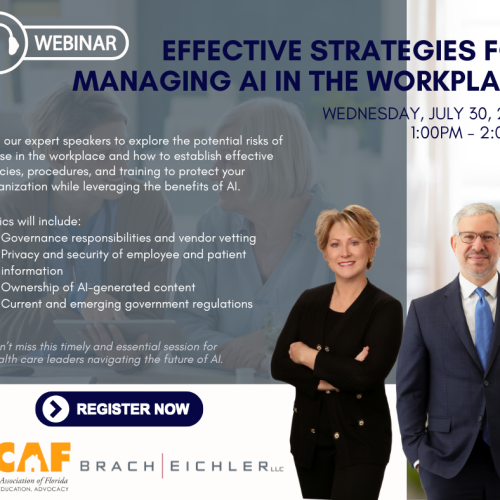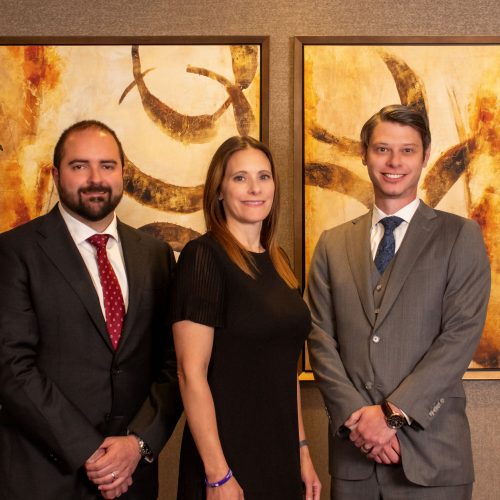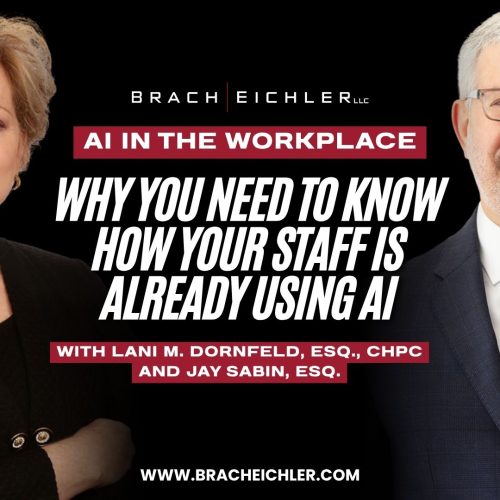Labor and Employment Alert: Extension to May 14 to Decide Whether to Keep the PPP Money or Return It
May 7, 2020 – By now, you presumably have heard of, read, possibly panicked, and are wondering what you should do with your Paycheck Protection Program (PPP) money in light of FAQ 31. That FAQ set a deadline of May 7 – which is now extended to May 14 – for applicants to return their PPP loan proceeds. Now that you have some breathing room, it is time for a refresher on where the law and regulations stand on the PPP loan monies as compared to the guidance known as FAQ 31.
What Does the Statute (That Congress Passed and the President Signed) Say?
It seems so long ago that the PPP was created as part of the Federal CARES legislation enacted on March 27, 2020. Sections 1102 and 1106 of that legislation is the PPP. The statute made clear that eligible recipients (the borrower) are both small business concerns as historically defined by the SBA, as well as any business identified by Congress in the statute (which includes the 500 employee maximum business).
The statute also makes clear, under the section titled “Credit Elsewhere,” that during the covered period (February 15, 2020 – June 30, 2020), the requirement that a “small business concern” would be unable to obtain credit elsewhere (a normal requirement of SBA loans) shall not apply. The statute does not state whether other businesses that are not “small business concerns” but are eligible recipients are also exempt from the unable-to-obtain-credit-elsewhere requirement. A reasonable explanation is that these other businesses that are eligible recipients were never subject to the “credit elsewhere” requirement in the first place, so there was no reason to exempt these other businesses from a requirement that they were not subject to in the first place. The much-discussed FAQ 31 states that these other businesses are not subject to this other “credit elsewhere” requirement so that helps clarify the issue.
The statute requires, under the section titled “Borrow Requirements,” that the applicant make a good faith certification “that the uncertainty of current economic conditions makes necessary the loan request to support the ongoing operations of the eligible recipient.” That is the certification Congress required the applicant to make as part of the application process – nothing less, nothing more.
How the Regulations Address the Applicant Certification
The initial SBA regulation on this requirement, at question 2t, reiterates exactly what the statute required and quoted above. Specifically, the regulation states:
What certifications need to be made?
ii. Current economic uncertainty makes this loan request necessary to support the ongoing operations of the applicant.
A subsequent SBA regulation titled “Promissory Notes, Authorizations, Affiliation, and Eligibility” introduced a May 7, 2020 safe harbor deadline date for borrowers to return the PPP money if the borrower obtained the funds “based on a misunderstanding or misapplication of the required certification standard.” But this regulation did not change what was always set forth in the statute written by Congress and which is the law.
And Then There Was FAQ 31 (and 37)
Then came FAQ 31 from the SBA and Treasury Department. This was part of what are now 44 frequently asked questions about the program, which by my count, has been updated 14 times. The FAQ sheet contains a disclaimer that it “does not carry the force and effect of law independent of the statute and regulations on which it is based.” While the FAQ at times provides helpful guidance as to what the regulators (not Congress) are thinking, it is not the law and not a regulation. But given the source, it is helpful to pay it respect and try to follow it where possible and consistent with the statute and regulations. But we stress, “guidance” is not a statute or regulation and to the extent it is inconsistent with the statute or regulation, it places borrowers in an unfortunate situation of having to figure out what to do.
FAQ 31, published on April 23, 2020 (nearly a month after the PPP program was born and after many borrowers had already received and started to spend the money), asks the following question:
Do businesses owned by large companies with adequate sources of liquidity to support the business’ ongoing operations qualify for a PPP loan?
As guidance and in response to this question, the SBA and Treasury wrote:
Answer: In addition to reviewing applicable affiliation rules to determine eligibility, all borrowers must assess their economic need for a PPP loan under the standard established by the CARES Act and the PPP regulations at the time of the loan application. Although the CARES Act suspends the ordinary requirement that borrowers must be unable to obtain credit elsewhere (as defined in section 3(h) of the Small Business Act), borrowers still must certify in good faith that their PPP loan request is necessary. Specifically, before submitting a PPP application, all borrowers should review carefully the required certification that “[c]urrent economic uncertainty makes this loan request necessary to support the ongoing operations of the Applicant.” Borrowers must make this certification in good faith, taking into account their current business activity and their ability to access other sources of liquidity sufficient to support their ongoing operations in a manner that is not significantly detrimental to the business. For example, it is unlikely that a public company with substantial market value and access to capital markets will be able to make the required certification in good faith, and such a company should be prepared to demonstrate to SBA, upon request, the basis for its certification.
Subsequently, FAQ 37 applied this guidance to businesses owned by private companies with adequate sources of liquidity to support the business’ ongoing operations.
The guidance appears to try and define what makes the loan request “necessary to support the ongoing operations” of the borrower – something the statute did not do. Unfortunately, the guidance only creates more confusion. The statute itself exempts small business concerns from having to exhaust other credit elsewhere. And FAQ 31 makes clear the SBA and Treasury consider the other businesses in the program are also exempt from exhausting other credit elsewhere. Yet FAQ 31 and FAQ 37 appear to require borrowers to use up other credit elsewhere – something the law plainly does not require.
In addition, this new guidance ignores the immense uncertainty of what’s to come in the next few months. Just because the business may have good business activity right now (the time that the guidance tells the applicant to consider), the business has no idea what things will look like in one, two, or three months. And it is that uncertainty that is the reason for the loan and all the statute requires from the applicant. If Congress wanted more from the applicant, it would have and could have said so.
Whatever the meaning and legal impact are of this “guidance” in FAQ 31, borrowers should not wing it in this area given the threats of civil and criminal action by the government. That does not, however, mean you should throw your hands up and return the PPP money. It means that these are the times that your professionals (i.e., your lawyers and accountants) should be advising you on what your best course of action is with respect to the PPP loan proceeds.
As always, we are here for you. For more information about this Alert or any other Labor and Employment issue, please contact:
Anthony Rainone, Member, Labor and Employment Practice, at arainone@bracheichler.com or 973-364-8372
Matthew Collins, Member and Chair, Labor and Employment Practice, at mcollins@bracheichler.com or 973-403-3151












